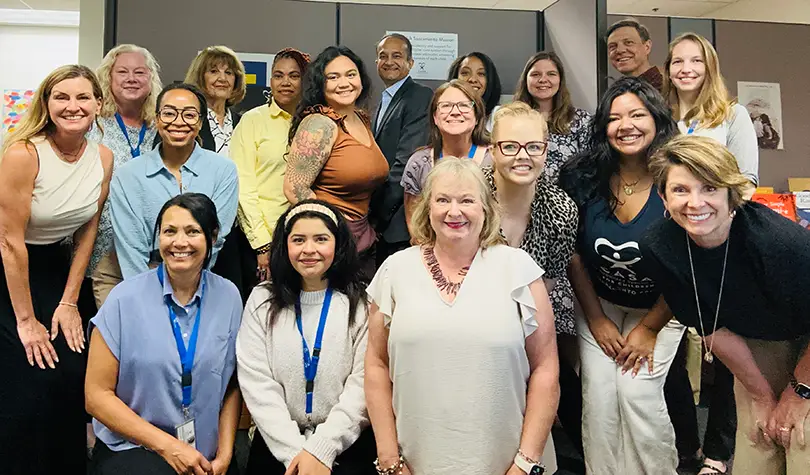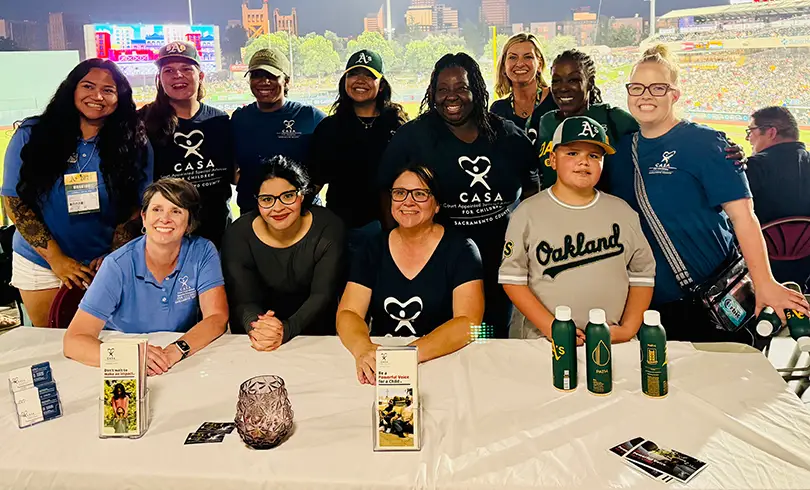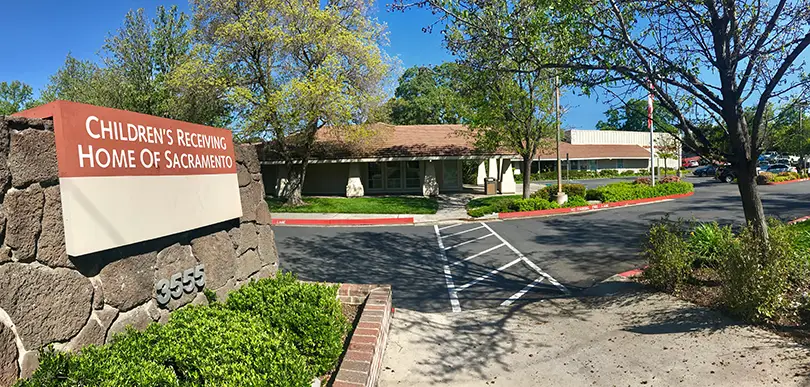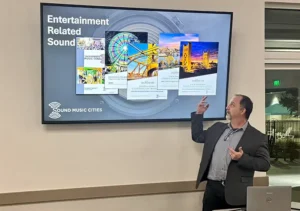There were 1,136 children in the foster care system in Sacramento County as of April 1, according to the California Child Welfare Indicators Project’s most recent point in time count. These youth are beginning to see some of the early ramifications of the many federal cuts that have taken place since January.

One of the programs that serves about 300 of these kids is the non-profit Court Appointed Special Advocates (CASA) of Sacramento. Tiffany Sickler, the program’s CEO, said one of the biggest direct effects of the federal cuts has been the uncertainty it’s brought in regards to federal grants the nonprofit applies for, illustrated best by the back and forth between the National CASA organization and the Department of Justice since April.
“Initially, there was an executive order that cut all of the previously congressionally appropriated funding for the national CASA organization,” Sickler said. “That was about $40 million dollars.”
The National CASA organization supports state and local county CASA programs by providing grant opportunities, Sickler said. While the grant funding was reinstated on Aug. 6, Sickler said the initial decision forced CASA Sacramento to change plans for the immediate future.
“Thankfully for us, we did not have any active National CASA grants that we were expecting for this period, but we were planning on submitting a grant for this next cycle,” Sickler said. Now they are instead having to reevaluate their next fiscal year budget.
Sickler said the volunteer advocates who work with CASA Sacramento spend a minimum of 18 months with a youth, learning what their needs are and working to support them. These advocates are then able to make recommendations in court that will better benefit the needs of the youth.
“Kids in care often have a number of team members, attorneys, social workers, therapists, investigators, and foster parents, but they’re all monetized,” Sickler said. “[A CASA advocate is] probably the only non-monetized relationship some of these kids have ever had in their lives.”

Sickler also said that even with grant funding restored, the staffing cuts to federal bodies that provided grants and contracts to child serving organizations like CASA would likely still be affected. For example, the Administration for Children and Families lost an estimated 35% to 40% of its staff since January, according to a letter from the Senate Committee on Finance published in April.
“There’s a huge trickle down effect to all of that,” Sickler said. “All of the other cuts that have come to the different states result in state budgets being readjusted.”
CASA Sacramento isn’t alone in having to deal with the uncertainty that arose in the aftermath of these budget decisions either. The Sacramento County Children’s Coalition (SCCC), an advisory body who works with the Sacramento County Board of Supervisors on matters regarding children, youth and families, also expects federal cuts to affect their work, said SCCC Chair Robin Blanks-Guster.
“We are anticipating that next year is when we really start to feel it,” Blanks-Guster said. “We advocate and we advise the board about the cuts because unfortunately people don’t think about it.”
Blanks-Guster said one of SCCC’s main goals is to get through the predicted difficulties while still making sure the children they work with are getting the services they need.
“Foster kids, when they go into the system, they’re already being traumatized and when they come in we want to help them with that trauma,” Blanks-Guster said. “We’ll be really looking at the services and seeing how effective they are, making sure that they’re still safe.”

Another organization keeping an eye on the federal cuts is the Children’s Receiving Home of Sacramento, a nonprofit that provides shelter, residential care and mental health services to children.
“Our organization has not been directly impacted by any of those cuts as of yet,” CEO Glynis Butler-Stone said. “But you never say never, right?”
Butler-Stone said that even before the current cuts the organization had seen its funding affected by changes at the federal level, specifically citing the Family First Services Prevention Act of 2018.
“It’s a pretty complicated bill, as you can imagine, but the emphasis was placing more dollars, especially federal dollars, into serving kids and families,” Butler-Stone said. Because of this new emphasis she said there is less funding going towards kids in group care, which is what the Children’s Receiving Home has historically been.
Another program, Sacramento State Guardian Scholars Program, expects federal cuts to affect those they serve. The program provides support to college students who lived in foster care. While the program receives most of its funding from the state, Director Linda Howe-Ram said that while the program may not be directly affected, the students they work with likely will.
“How it does affect our students is when it comes to federal funding or federal grants that they may have received in the past,” Howe-Ram said. “That could be a huge hindrance for our students because they’re thinking that they are going to get a certain grant that’s through the federal government, and now it’s been cut.”
Howe-Ram said keeping an eye on these changes is important for many college students coming from the foster care system, as these grants and scholarships can determine whether or not they are able to afford to go to college.

While uncertainty remains in regards to the future of federal funding for foster services, those who work with these youth said that they have seen a noticeable rise in community support. Sickler said that summer is usually a difficult time for CASA Sacramento to find volunteers, but this year they had a large group who wanted to help.
“We actually have one of the largest classes of incoming advocates right now, which is just a blessing for us because it’s not expected.” Sickler said. “Honestly, the community support has been really heartwarming.”
Of course, even the increase in community support does have its challenges, with Sickler noting there is a lot of competition for philanthropic funding.
“People have less money to donate, and they have a lot more causes that haven’t been at risk previously, like healthcare and the environment,” Sickler said. “So everyone is asking for that same pool of funding.”
Blanks-Guster said SCCC works with partners to provide support, including First 5 Sacramento, the Child Abuse Prevention Council of Sacramento and the Sacramento County Department of Child, Family and Adult Services.
“We’re still looking around and seeing who we can partner with for different things because we do want to make sure that we’re on the same page,” Blanks-Guster said. “Anybody that has to do with children that we feel can contribute and help us in any way, to meet these goals to get the number of foster children down, we’re like ‘help us please.’”

Butler-Stone said she’s also seen a noticeable increase in community support and collaboration. She said previously these organizations would operate in silos, but with the uncertainty regarding funding has forced them to look to one-another for support.
“There’s been more town halls, there’s more conversations between nonprofits,” Butler-Stone said. “I think between the nonprofits coming together and saying, ‘Hey, we’re going to be stronger if we work together,’ we’ve been able to rally.”
One of the ways Butler-Stone said the Children’s Receiving Home has been collaborating with others is through the creation of an advisory team with the Sacramento Region Community Foundation. She said they have been working with a group of eight other nonprofits to look into funding options.
“I think what we have to do as nonprofit providers is that we have to come together,” Butler-Stone said. “We have to work closer together because of the uncertainties moving forward.”
This story is part of the Solving Sacramento journalism collaborative. Our partners include California Groundbreakers, Capital Public Radio, Hmong Daily News, Russian America Media, Sacramento Business Journal, Sacramento News & Review and Sacramento Observer. Support stories like these here, and sign up for our monthly newsletter.
By Jacob Peterson


















